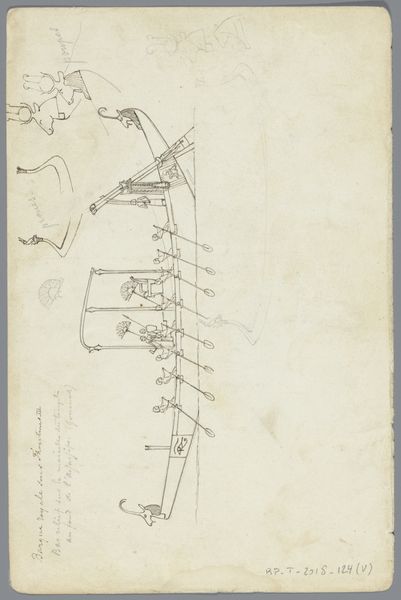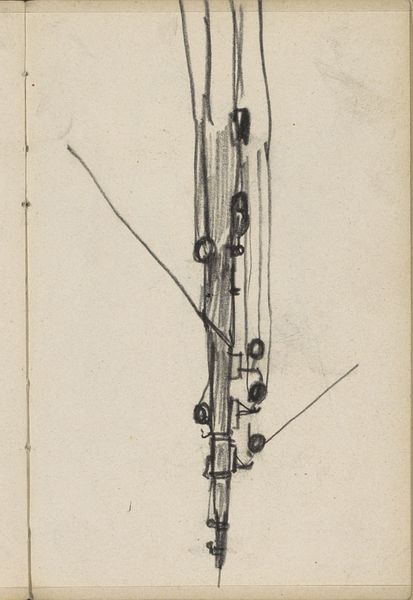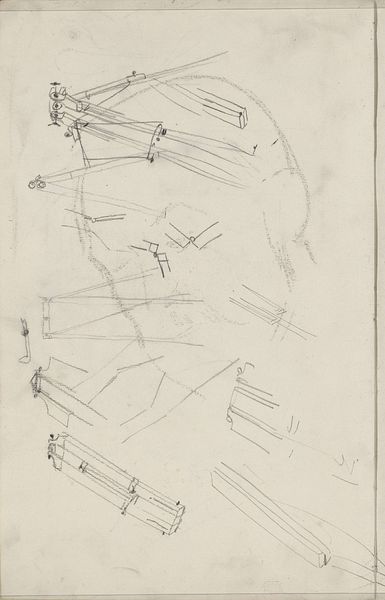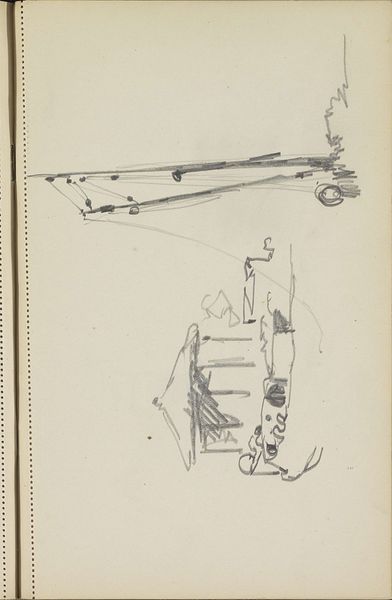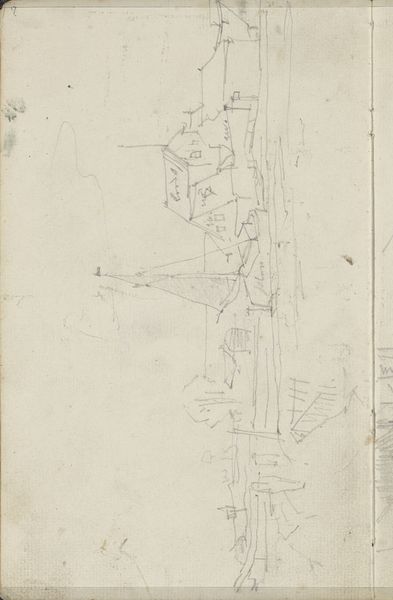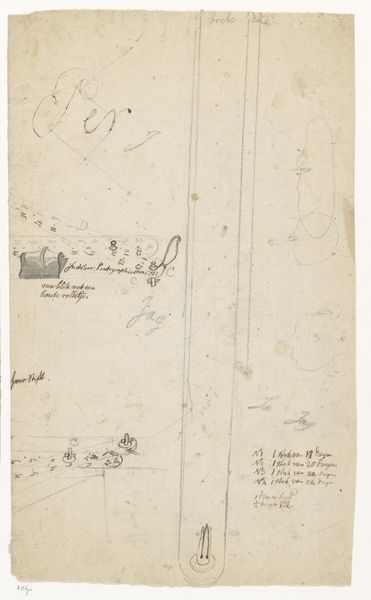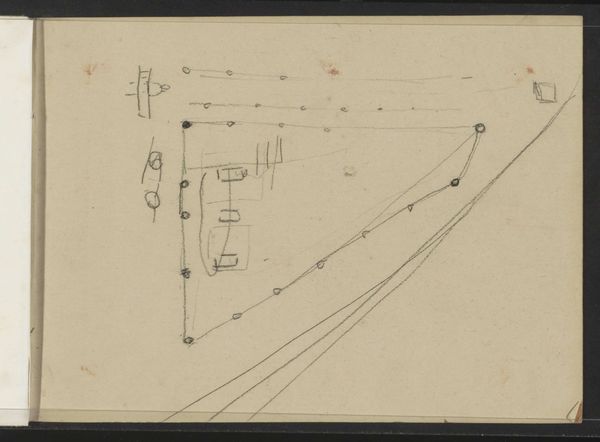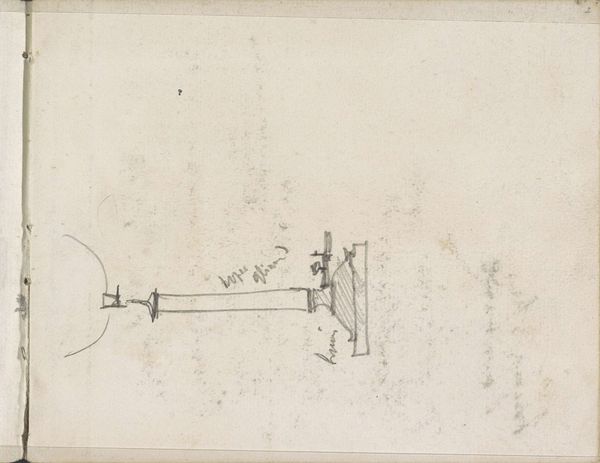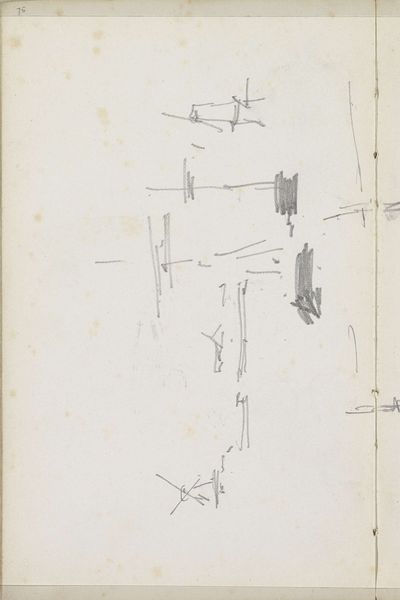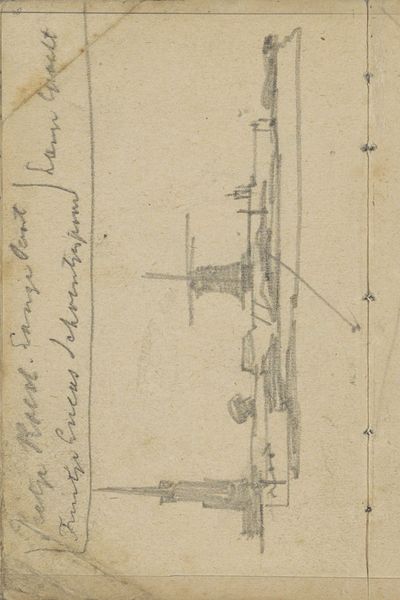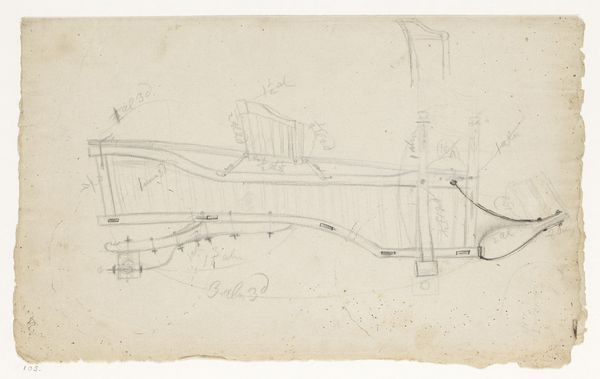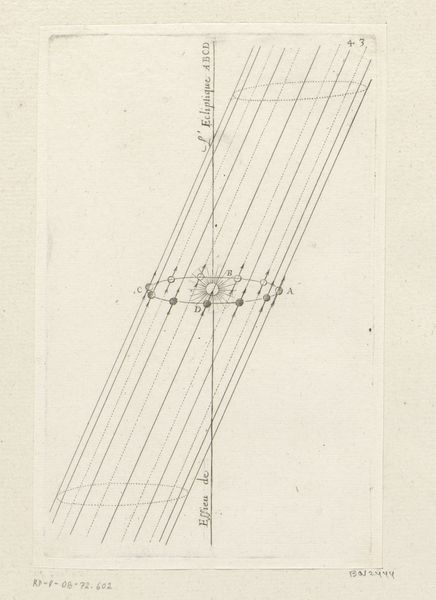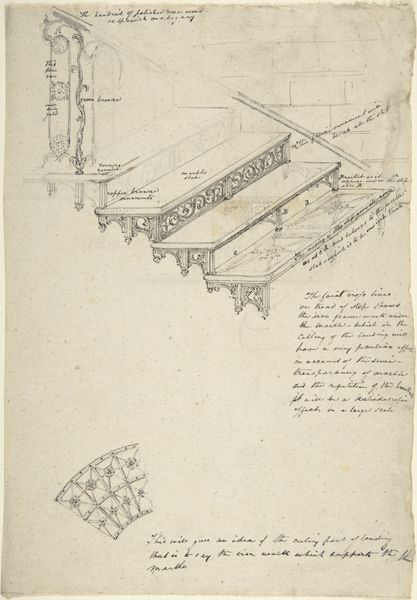
drawing, pencil
#
drawing
#
geometric
#
pencil
#
line
#
academic-art
#
realism
Dimensions: height 300 mm, width 190 mm
Copyright: Rijks Museum: Open Domain
Editor: This is "Pantograaf," a drawing from between 1787 and 1808 by Jan Brandes, using pencil. It shows a geometric object. What stands out to me is how raw and technical it feels. How do you interpret this work? Curator: What intrigues me is the drawing's very essence as a record of making. Consider the materials: pencil and paper, humble tools capable of complex replication. Brandes is not presenting us with a finished piece, but with a diagram of a process, a piece of engineering perhaps. Look closely – what does the labor invested in each line, each calculation reveal about the social context of artistic production at that time? Editor: So you're less focused on it as an art piece, and more as documentation? Curator: Precisely! The academic-art style grounds this in a world where precision and utility were valued. Brandes treats the drawing as a means to an end, a tool for understanding and manipulating the world. How does that blur the line between art and craft, high culture and functional design? It also raises interesting questions. Who were the makers of similar instruments and drawings, what purpose might they have served? Editor: That’s a perspective I hadn't considered. The idea of the artwork as a piece of evidence changes how I see it. I am thinking about the materiality differently. Curator: Indeed. Consider this less as an aesthetic statement and more as a window into the material culture of a particular time. The focus shifts to the social relationships inherent in production – how objects like this shape the world we inhabit. What possibilities does that suggest for your understanding? Editor: I guess that art making in itself is labour and that by understanding the tools you appreciate the production. This really helped me see beyond the surface, literally. Curator: Exactly! And perhaps this understanding lets us view these drawings critically through the production and the labor behind them.
Comments
No comments
Be the first to comment and join the conversation on the ultimate creative platform.
